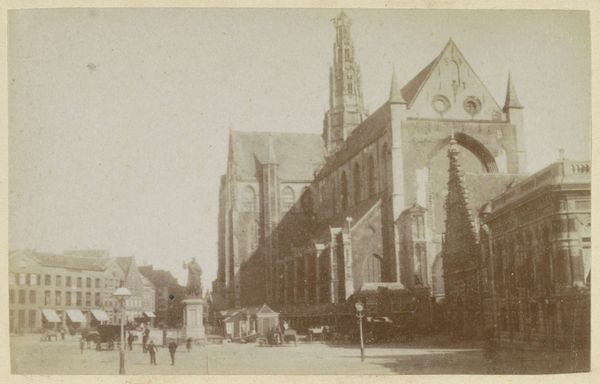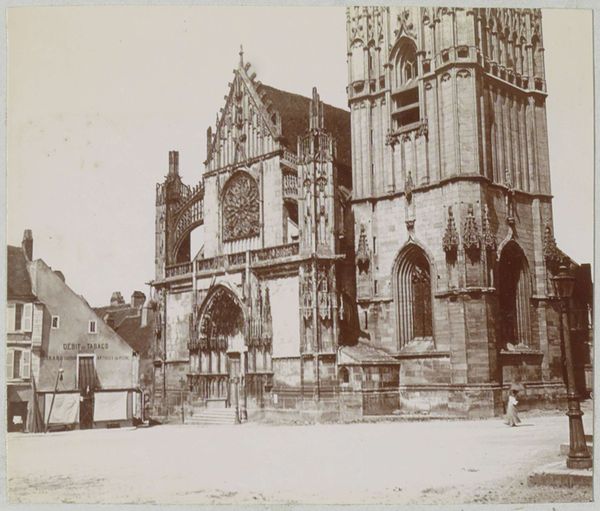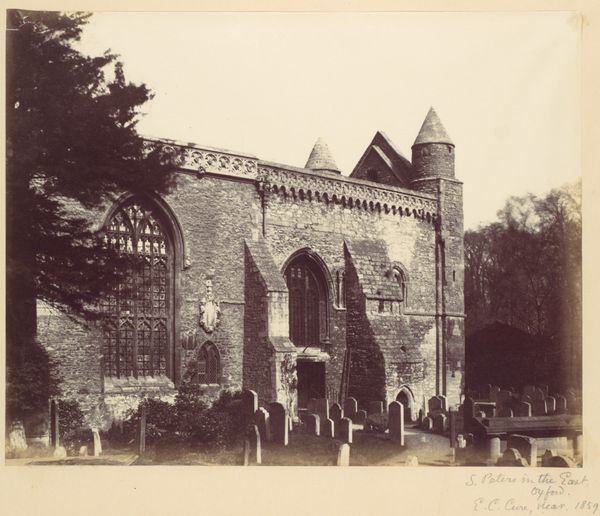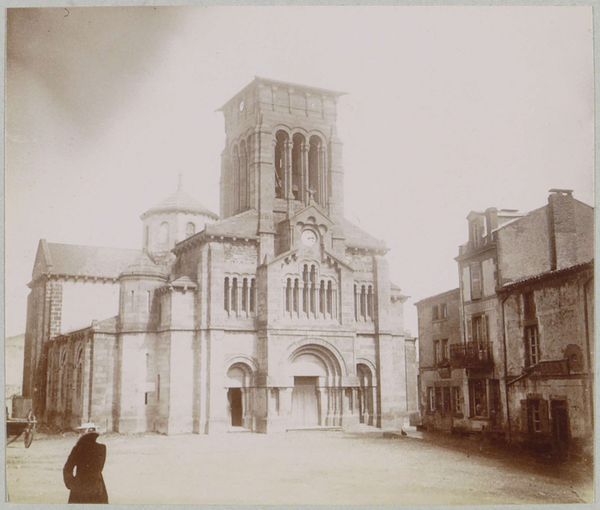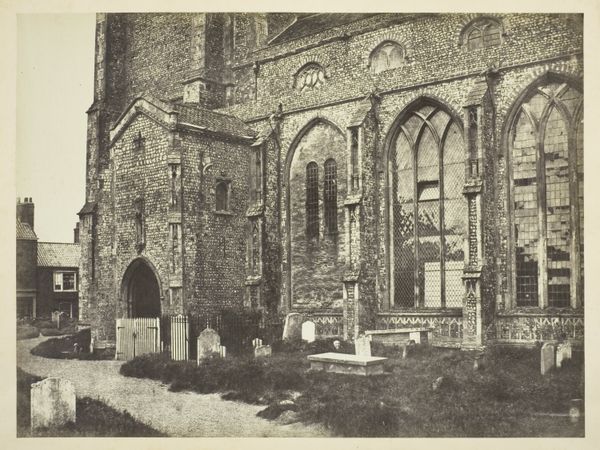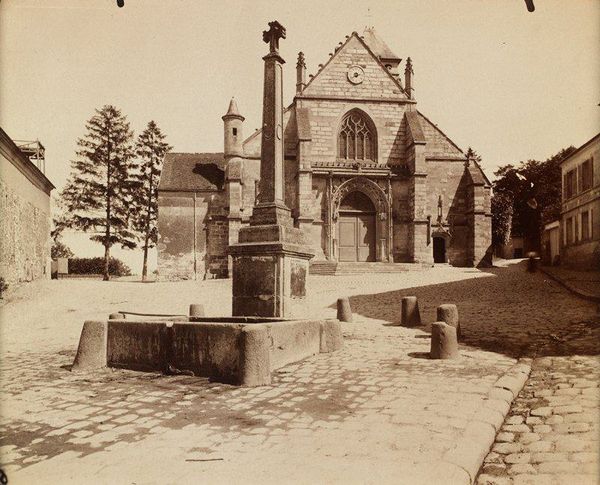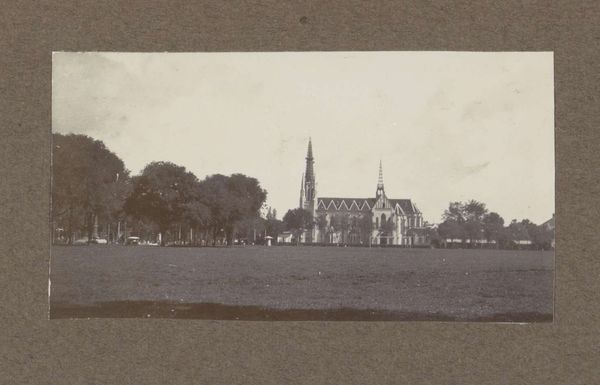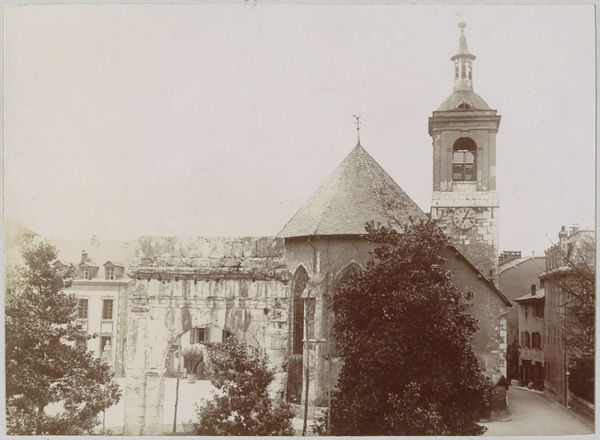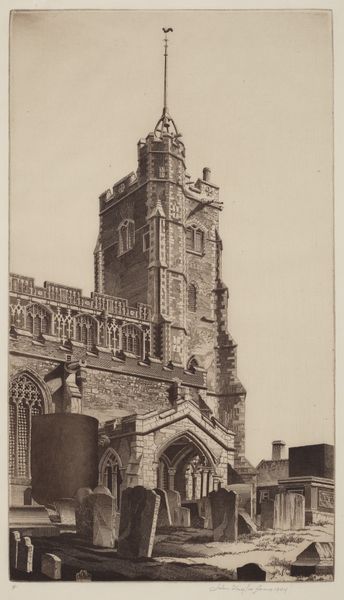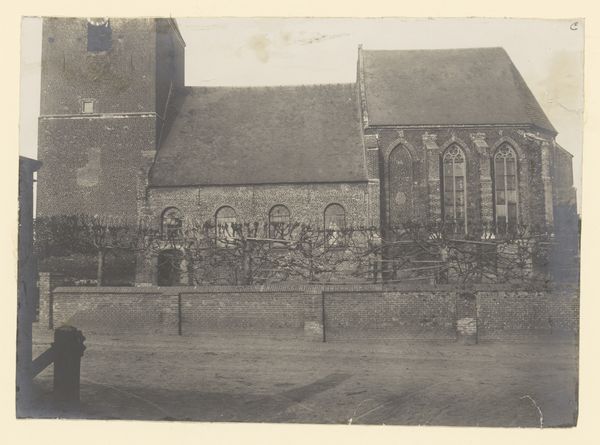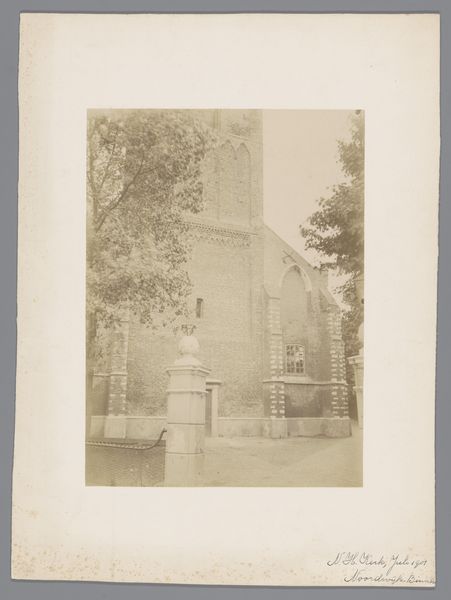
Dimensions: height 71 mm, width 82 mm
Copyright: Rijks Museum: Open Domain
Editor: This is a photograph titled "Kerkhof (enclos paroissial) bij de Saint-Suliau in Sizun" taken in 1901. It seems to depict a town square of sorts with gothic architecture. There is an imposing tower to the right, what appears to be a covered walkway, and two women walking near the gate in the bottom left. It is muted in tone and sepia in colour. What do you see in this piece, in terms of what it means or tells us about the world back then? Curator: I see more than just gothic architecture; I see a power dynamic frozen in time. These 'enclos paroissiaux' in Brittany weren’t just pretty churchyards; they were statements. Who had the resources, the cultural capital, to build these elaborate displays of faith? Who was excluded or marginalized by their very existence? This image documents the rise of bourgeoisie over feudal arrangements; landowners invested capital that demonstrated power as statements that were impossible for others to make. What stories do you think are missing from the photograph? Editor: I hadn't considered the photograph within such specific social terms! Well, perhaps the stories of those who labored to build these structures, or maybe those who were disenfranchised and had limited access to it. Curator: Exactly! We can even look at the two women in the photo – what can we infer about their role or class from their positioning and attire in relationship to their environment? Realism here isn’t just about depicting a scene accurately. It also captured – albeit inadvertently – the inequalities of that society. It urges us to critically assess historical narratives of this landscape, prompting discussions on privilege, exclusion, and resistance in seemingly innocuous scenes. Editor: So it's about interrogating the seemingly "realistic" facade to uncover hidden social narratives and inequalities embedded in our collective perception of it? Curator: Precisely. It prompts us to view art history as a battleground of competing narratives, and the need to amplify marginalized voices within these visual records. Editor: This has completely changed the way I perceive this image; from something pretty to a photograph steeped in complex sociopolitical issues. Thanks for your time.
Comments
No comments
Be the first to comment and join the conversation on the ultimate creative platform.
